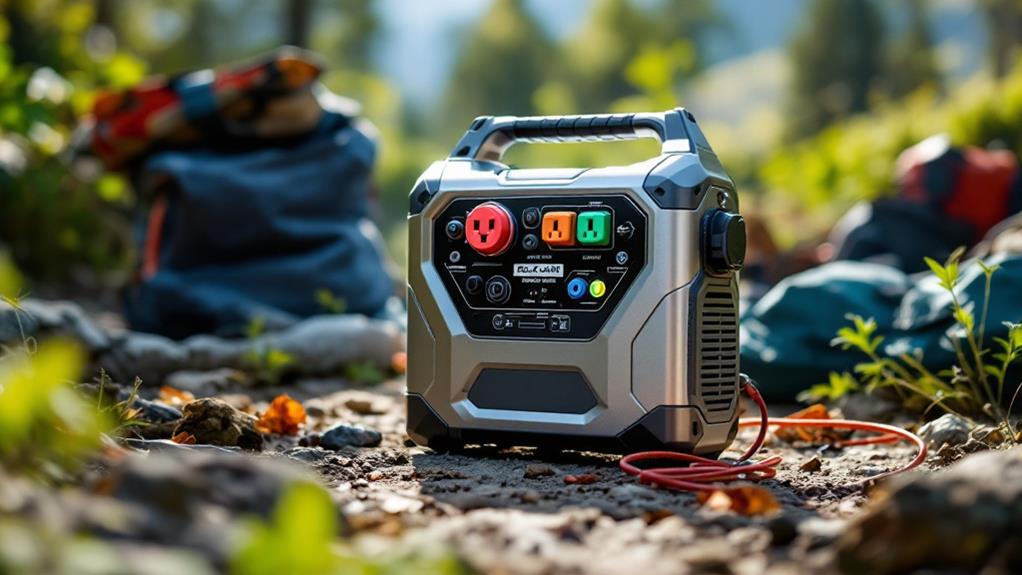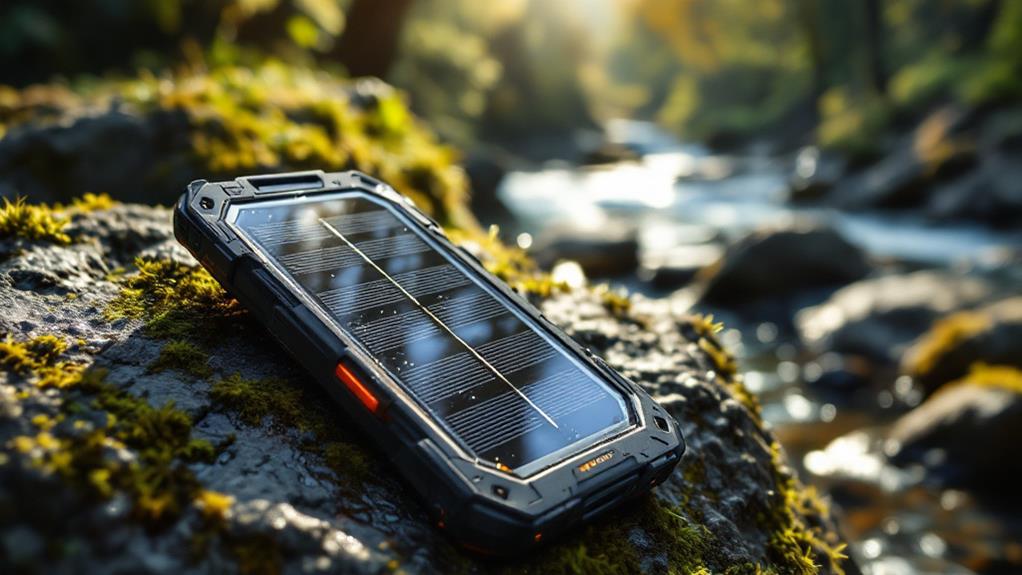How Many Devices Can a Hand Crank Generator Power? What You Need to Know
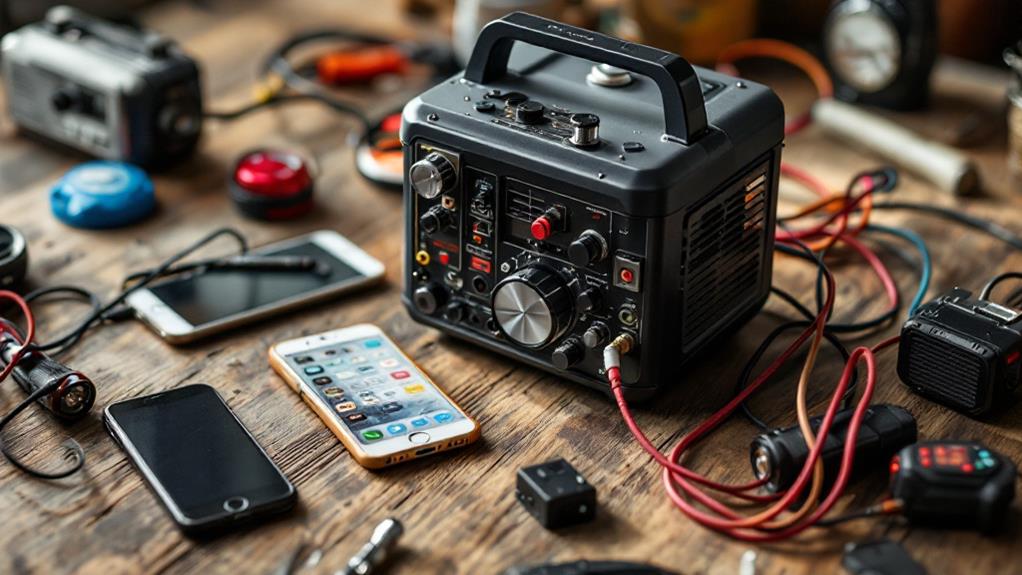
With a hand crank generator, you can power small electronics like LED lights, phone chargers, and emergency lighting. These generators typically produce between 5 to 15 watts, so they're great for charging phones and powering camping gear, but they're not suitable for energy-intensive devices like laptops or appliances. The number of devices you can power depends on their combined wattage. Keep in mind, consistent cranking is essential for stable output, and each device's wattage should be checked to avoid overloading. If you're interested in maximizing your generator's potential and exploring practical scenarios, there's more to evaluate.
Understanding Hand Crank Generators
In regards to understanding hand crank generators, you've got to initially grasp how they convert mechanical energy into electrical energy. When you turn the crank, the generator mechanics come into play. This action rotates a coil within a magnetic field, inducing an electric current through the principles of electromagnetic induction. It's fascinating how such a simple mechanism can create a usable power source.
Hand crank generators have a rich history and were among the earliest methods for generating electricity on a small scale. During the late 19th and early 20th centuries, they found historical uses in telegraphy and early telephones, providing the necessary electrical power to send signals. You might also find it intriguing that they were used in field radios during wartime, offering a lifeline of communication when electricity was scarce.
Today, understanding these generators can help you appreciate their enduring utility. They're not just relics of the past; they still play a role in emergency preparedness and sustainable energy solutions. By grasping the basic generator mechanics and historical uses, you'll have a solid foundation for knowing how these devices fit into the broader context of energy generation.
Energy Output and Limitations
When evaluating the energy output of hand crank generators, you'll find that these devices typically produce modest amounts of electricity, often in the range of 5 to 15 watts. This energy capacity is usually sufficient for small electronics, like LED lights or charging a phone. However, it's significant to bear in mind that a hand crank generator's output stability can vary based on how consistently and efficiently you crank it.
Unlike conventional power sources, hand crank generators rely entirely on your manual input. If your cranking speed fluctuates, it affects the output stability, which might lead to inconsistent power supply. This can be particularly vital when you're trying to charge sensitive devices that require a steady power flow.
Another limitation to take into account is the physical effort involved. Generating power through a hand crank can be labor-intensive, and sustaining the effort for extended periods can be challenging. This means that while hand crank generators are handy for short-term needs, they're not ideal for powering devices over long durations or for energy-intensive gadgets.
Types of Devices Powered
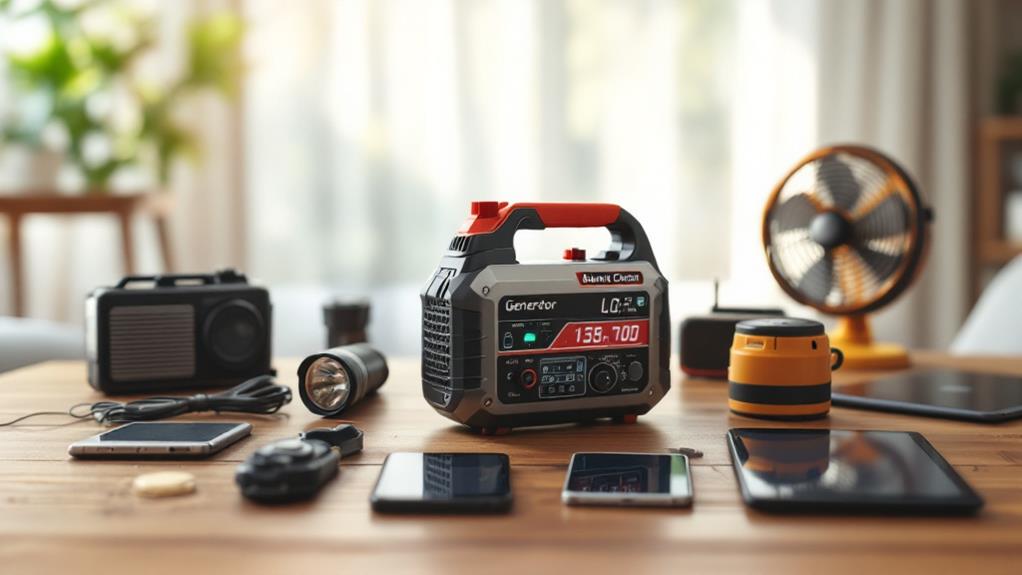
Hand crank generators can power a surprising variety of small devices, making them quite versatile in certain situations. Regardless if you're planning a camping trip, preparing for emergencies, or engaging in outdoor activities, these generators provide a reliable source of renewable energy. They're perfect for situations where traditional power sources aren't available.
Consider these devices that can be powered by a hand crank generator:
- Portable chargers: Keep your phones and tablets charged, ensuring you're always connected.
- Emergency lighting: Illuminate your surroundings when the power's out, enhancing safety and visibility.
- Camping equipment: Power small appliances like lanterns and fans to improve your camping experience.
- Battery backup: Rechargeable battery packs can be juiced up to provide power when you need it most.
Hand crank generators are also great for DIY projects that involve renewable energy. They offer a hands-on way to understand how energy is generated and used. Plus, they're ideal for teaching about sustainable practices. Regardless if you're powering a small fan, LED lights, or a radio, these compact generators are a dependable solution when you need a little extra power in remote or off-grid locations.
Estimating Device Power Requirements
To effectively use a hand crank generator, understanding the power requirements of your devices is crucial. Each device you plan to power has a specific device wattage, which indicates how much energy it needs to operate. This wattage is usually found on the device's label or its user manual. Knowing this figure helps you estimate the total power consumption when using the device with your generator.
Start by listing out all the devices you want to power. Check each for its device wattage. For example, a small LED flashlight might require only a few watts, whereas a smartphone could need around 5 watts. Add up the wattages of all devices you intend to use simultaneously to get the total power consumption. This total helps you understand how much energy your hand crank generator needs to produce.
Keep in mind that some devices draw more power than others, especially those with motors or heating elements. Always factor in a little extra to accommodate any fluctuations in power consumption. By knowing this, you can better plan your energy use and make certain your hand crank generator meets your needs effectively.
Matching Generator to Device Needs
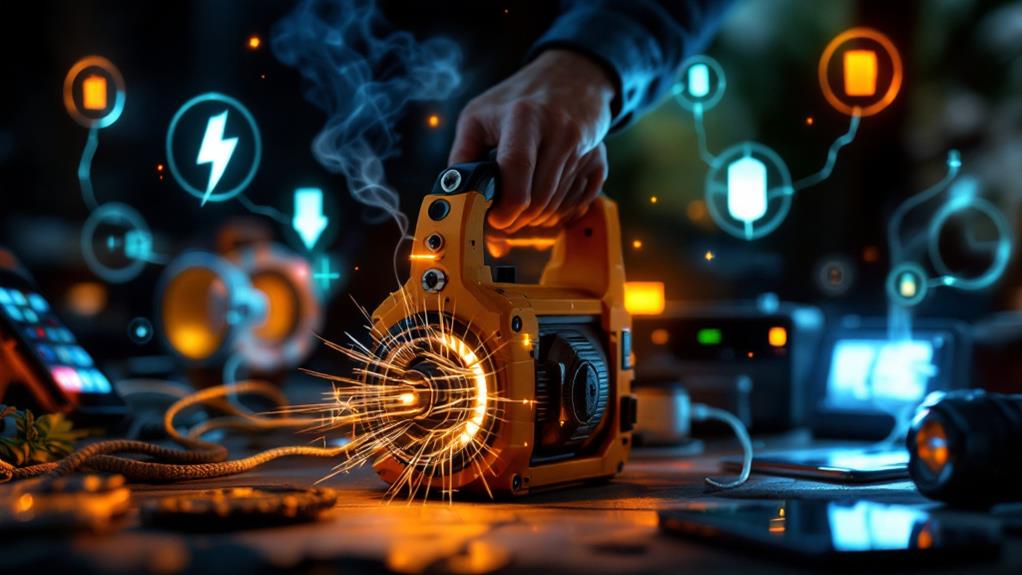
Once you've determined the power requirements of your devices, it's time to confirm your hand crank generator can meet these needs. Initially, verify generator compatibility by comparing the device wattage with the generator's output capacity. If your device needs more power than the generator can supply, it won't work effectively, if at all. To match your generator to device needs, consider the following:
- Check the Generator's Output: Validate the maximum wattage the generator can produce. This helps in understanding if it can handle your device's power demand.
- Assess Device Wattage: Look at each device's wattage requirement. It's essential to know this to avoid overloading the generator.
- Prioritize Devices: If the generator's capacity is limited, decide which devices are most significant for your immediate needs. This prioritization guarantees efficient use of available power.
- Consider Efficiency Ratings: Some generators have efficiency ratings that affect their actual power delivery. Knowing this helps you better match the generator to your devices.
Factors Affecting Performance
Several factors can greatly impact the performance of a hand crank generator. Initially, crank speed plays a vital role. The faster you turn the crank, the more energy you generate. However, maintaining a consistent speed is essential because fluctuations can lead to unstable power output. You need to find a comfortable pace that you can sustain over time without causing fatigue.
Next, consider the generator design. Different designs offer varying levels of efficiency. Some generators might require more effort to produce the same amount of energy as others. Look for designs that optimize output while minimizing the physical exertion needed. Pay attention to the build quality as well, since sturdy materials can improve durability and performance.
Additionally, the generator's internal components, like magnets and coils, affect performance. High-quality materials and precision engineering can greatly increase efficiency, allowing you to power more devices with less effort. Also, consider environmental conditions. Cold or damp conditions can affect the generator's efficiency and your ability to maintain a steady crank speed.
Understanding these factors will help you get the most out of your hand crank generator, ensuring you can power as many devices as possible when needed.
Enhancing Efficiency and Output
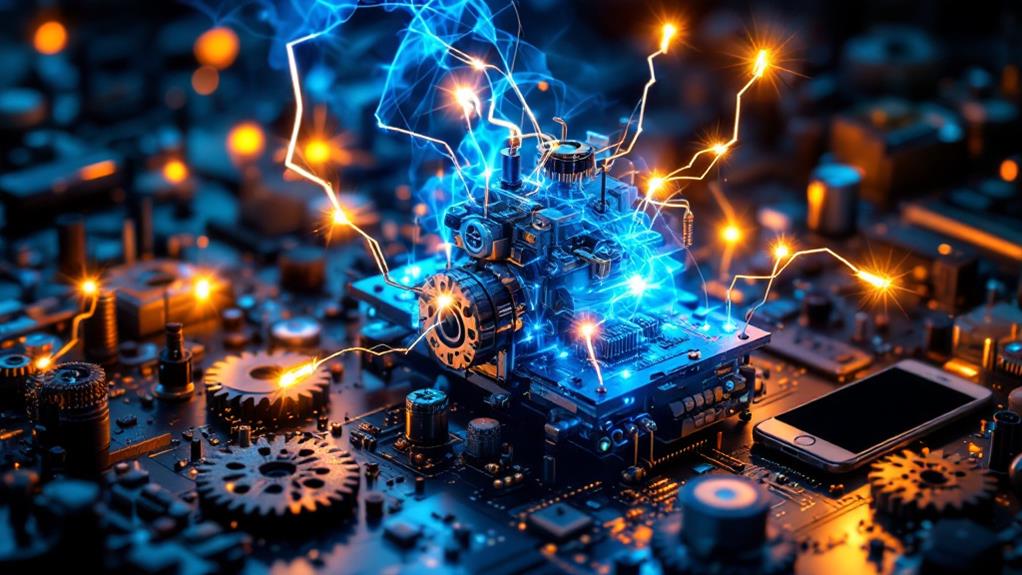
Maximizing the efficiency and output of your hand crank generator requires a combination of strategy and technique. One vital aspect is the crank design; a well-engineered crank guarantees smooth operation and reduces unnecessary strain. You can optimize energy conversion by choosing a generator with minimal resistance, which allows more of your effort to be turned into electricity. To improve performance, consider these tips:
- Optimize Crank Design: Choose a crank that's ergonomic and easy to turn, reducing fatigue and increasing output.
- Enhance Energy Conversion: Select a generator with efficient components that minimize energy loss during conversion.
- Regular Maintenance: Keep your generator clean and well-lubricated to avoid friction that can lower efficiency.
- Consistent Speed: Crank at a steady pace to guarantee a stable flow of energy, which helps in maintaining device power.
Practical Applications and Scenarios
When you're considering the practicality of a hand crank generator, think about its versatility in different scenarios. In emergency preparedness, such a device can be a lifesaver, providing portable power for vital gadgets like flashlights, radios, or phones when conventional power sources fail. It's a significant component of any survival gear, ensuring you're not left in the dark when unexpected situations arise.
For outdoor activities, a hand crank generator offers portable power, making it a reliable companion for camping trips or hiking adventures. You can charge small devices, ensuring you stay connected or have light during your expedition. It's also an excellent tool for DIY projects, especially if you're keen on renewable energy solutions. Building a custom generator setup can be both educational and practical.
In off grid living, hand crank generators serve as efficient backup systems, adding an extra layer of security to your energy independence. They provide a renewable energy source that doesn't rely on the grid, perfect for those embracing a self-sufficient lifestyle. Regardless if you're in need of emergency power or looking to improve your outdoor experiences, hand crank generators offer a flexible and sustainable solution.
Tips for Choosing the Right Generator
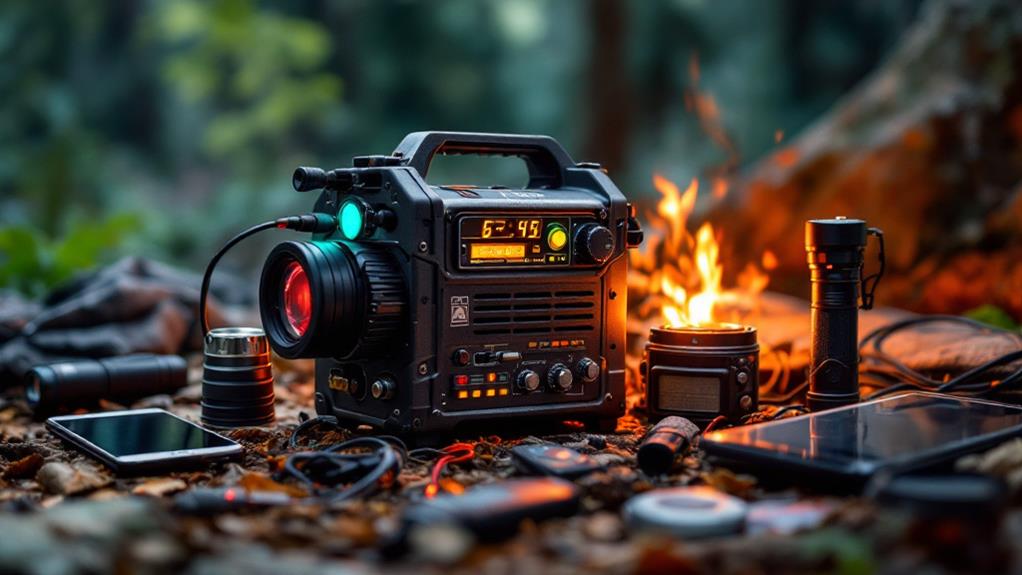
Considering the scenarios where hand crank generators prove invaluable, it's important to choose the right one to fit your needs. With so many options available, it can be overwhelming, but focusing on a few critical aspects will simplify your decision. Here are some key tips to guide you:
- Generator portability considerations: Look for lightweight designs that are easy to carry. Compact models are perfect for camping or emergency kits, making sure you can move them without hassle.
- Power output: Determine the devices you plan to power and check if the generator's output matches those requirements. Portable generators typically power small electronics, so make certain it's enough for your needs.
- Durability and build quality: Opt for a generator made from sturdy materials that can withstand rough handling, especially if you'll be using it outdoors frequently.
- User friendly features: Seek out models with easy-to-use cranks and clear instructions. A generator with intuitive features means less time troubleshooting and more time generating power.

